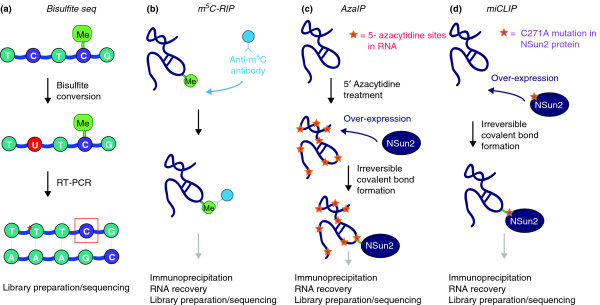Figure 1.

A comparison of four techniques used to identify transcriptome-wide m5C sites. (a) Bisulfite sequencing, (b) m5C-RIP, (c) Aza-IP and (d) miCLIP can all be used to detect m5C sites. The asterisk in (a) indicates bisulfite-mediated conversion of unmethylated cytosines in RNA, and the red box indicates non-conversion due to the presence of cytosine methylation. In Aza-IP, the cytidine analog 5-azacytidine sites are randomly introduced into nascent RNA following cellular exposure to 5-azacytidine, and in miCLIP, the NSun2 protein is engineered to harbor the C271A mutation. Whereas transcriptome-wide bisulfite sequencing does not enrich for methylation targets, m5C-RIP, Aza-IP and miCLIP do so via immunoprecipitation, with Aza-IP and miCLIP utilizing covalently bound protein-RNA complexes. The introduction of a covalent bond between protein and RNA in Aza-IP and miCLIP is dependent on the modified sites introduced into RNA substrates and the NSun2 protein, respectively.
